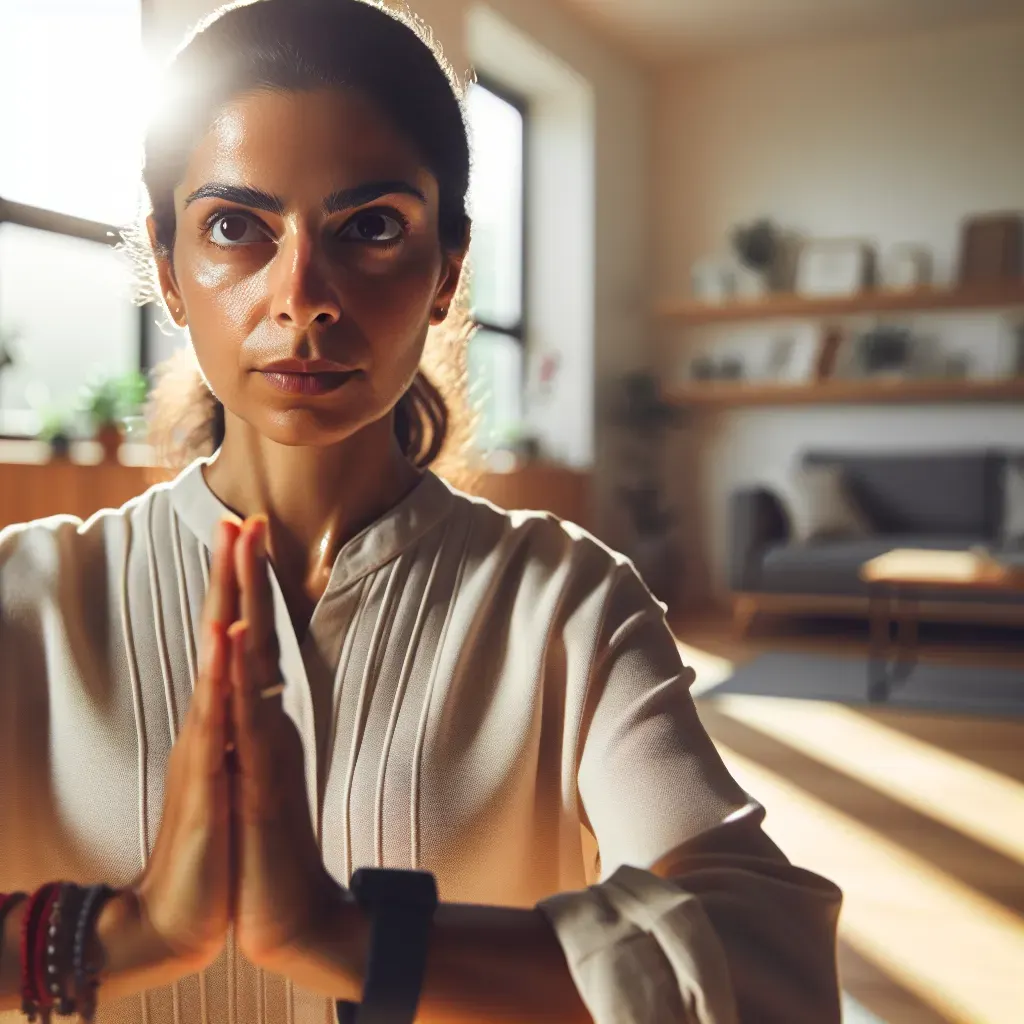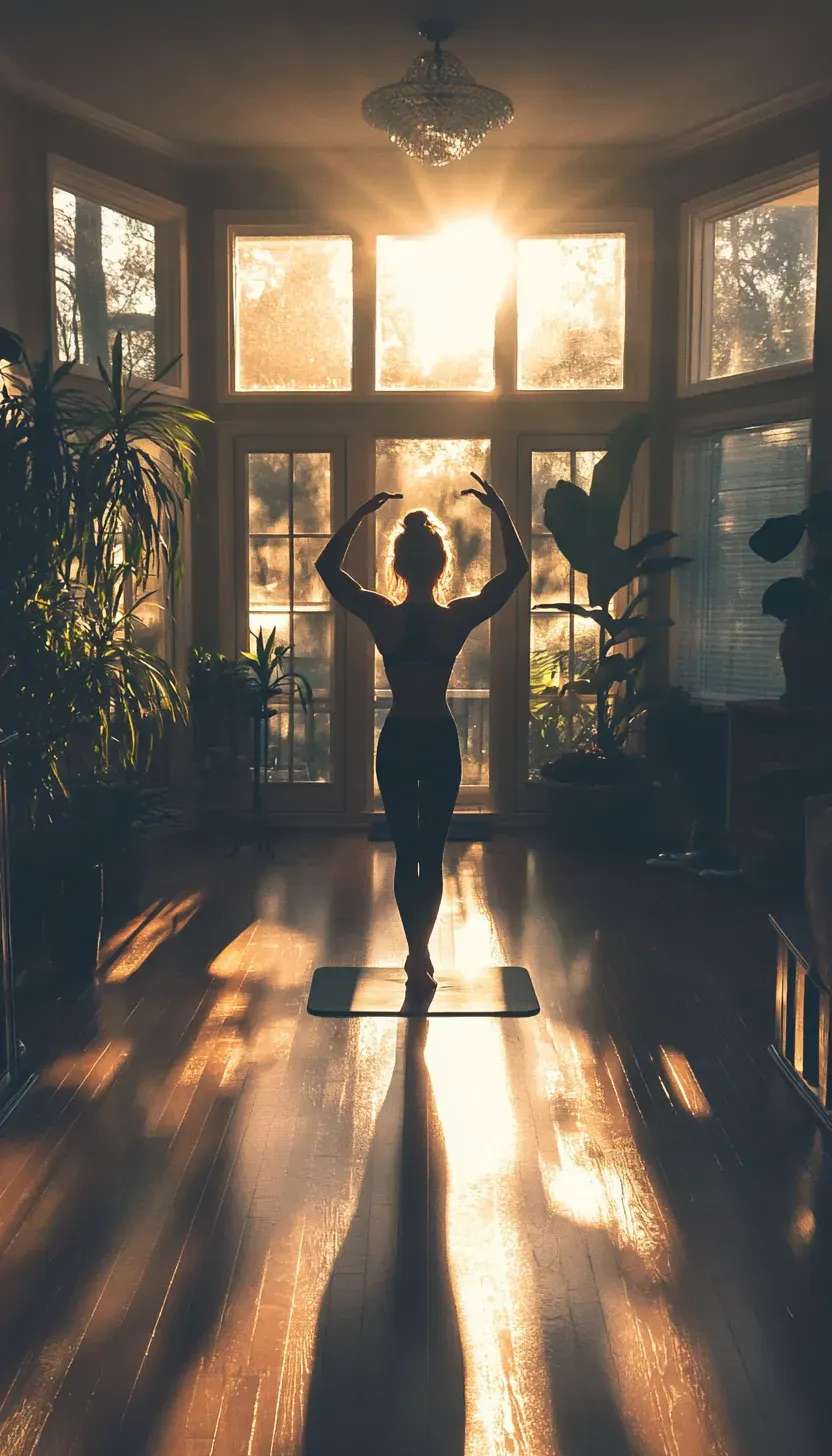What Is Vinyasa Flow Yoga Good For? A Guide for Fitness Enthusiasts
Table of Contents
- What Makes Vinyasa Flow Different
- Physical Benefits: Strength, Flexibility, and Balance
- Mental Clarity and Mindfulness
- Linking Breath with Movement
- Vinyasa as Moving Meditation
- Real-World Applications for Fitness
- Cross-training benefit
- Injury Prevention
- Better Performance
- How to Get Started with Vinyasa
- Final Thoughts
Vinyasa Flow Yoga is a style of yoga that connects breath with movement in a continuous sequence of poses.
Each posture transitions smoothly into the next, creating a fluid and energizing practice that feels like moving meditation.
If you’ve hit a plateau in your training, struggle with flexibility, or need a mental reset without slowing down, Vinyasa could be a game changer.
This guide breaks down what Vinyasa Flow is, how it benefits your body and mind, and why it fits seamlessly into any fitness routine.
What Makes Vinyasa Flow Different?
Vinyasa stands out for its rhythm, variety, and intensity.
Unlike slower yoga styles that hold poses for extended periods, Vinyasa is all about flow.
You move from one pose to the next with each breath building strength, flexibility, and focus in a single session.
Other yoga styles may repeat the same sequence every time. Vinyasa doesn’t. Classes often vary based on the teacher’s design, making each session fresh and challenging.
That unpredictability trains your brain along with your body.
In a typical class, expect:
- Standing and balancing postures
- Core activation
- Backbends and forward folds
- Transitions like planks and chaturangas
- Breath cues for each movement
This structure makes it more dynamic than Hatha, less intense than Power Yoga, and more fluid than Bikram or Ashtanga.
It adapts easily to different fitness levels, whether you're a beginner or an athlete.
Physical Benefits: Strength, Flexibility, and Balance
Build Strength with Your Body Weight
Vinyasa doesn’t rely on equipment. You use your body as resistance.
Holding planks, chaturangas (yoga push-ups), and standing poses like Warrior II builds strength in your arms, core, legs, and back.
Repeating these sequences over time develops muscular endurance without adding bulk.
Movements like the high lunge or side plank activate multiple muscle groups at once, building total-body stability.
Improve Flexibility Over Time
You don’t need to be flexible to start. Vinyasa helps you become flexible.
Each sequence gradually opens tight areas—like hips, hamstrings, and shoulders. Active stretching combined with heat from movement allows muscles to release safely.
Over time, you’ll notice:
- Easier range of motion in joints
- Less stiffness in your back and legs
- Improving posture and alignment
This added mobility supports other training modalities like lifting, running, or cycling.
Enhance Balance and Coordination
Vinyasa challenges your balance through standing poses and transitions.
Poses like Tree, Warrior III, and Half Moon require coordination between breath, gaze, and core engagement. Even subtle shifts train your stabilizing muscles and nervous system.
This builds proprioception, your body’s ability to sense movement and positioning.
The result? You move more efficiently and reduce your risk of falls or injury.
Mental Clarity and Mindfulness
One of the most underrated benefits of Vinyasa is how it sharpens mental focus.
In every class, you're asked to:
- Follow your breath
- Move with intention
- Stay present
This turns physical movement into a mindfulness practice.
By focusing on your breath and alignment, distractions fade. You’re less likely to dwell on stress, work, or tomorrow’s to-do list. Instead, you return again and again to the present moment.
This carries over into daily life.
You may find yourself more calm during chaos. More focused at work. More in control during tough workouts.
That’s because Vinyasa teaches you to breathe through intensity and stay steady under pressure.
The clarity you build on the mat becomes mental strength off the mat.
Linking Breath with Movement: The Core Principle
Breath is the anchor of Vinyasa.
Each inhalation and exhalation signals a movement:
- Inhale: lift, open, expand
- Exhale: fold, release, ground
This breath-led structure turns exercise into rhythm. It paces your movement and prevents you from pushing past your limits.
Syncing breath with movement also affects your nervous system.
Deep, controlled breathing activates the parasympathetic system your body’s rest-and-recover mode.
This calms your heart rate and lowers stress, even when your muscles are working hard.
Think of it as interval training for your brain.
It keeps you from overheating physically or mentally and creates a practice that’s both energizing and restorative.
Vinyasa as Moving Meditation
Many people struggle with seated meditation.
They sit still, but their minds race. Thoughts pull them in different directions.
Vinyasa offers an alternative.
The continuous movement, combined with breath awareness, creates a flow state. Your body stays active while your mind focuses on sensation, posture, and rhythm.
Repetitive transitions like Sun Salutations reinforce this meditative quality.
The more you practice, the more automatic the sequence becomes.
That familiarity creates space for deeper awareness. You know what’s coming next, so you tune into how you feel in each moment.
This meditative rhythm calms mental chatter without forcing stillness.
You move your body, but you quiet your mind.
Real-World Applications for Fitness Enthusiasts
Cross-Training Benefits
If you train regularly, whether it’s lifting, HIIT, or running, Vinyasa fills the gaps.
It improves joint mobility, muscular control, and range of motion.
These are often overlooked in traditional workouts but are key to long-term performance.
Athletes often use Vinyasa as active recovery. It gives the body time to repair without losing momentum.
Injury Prevention
Tight hips, weak glutes, poor posture Vinyasa targets these issues directly.
By stretching under control and building strength through full ranges of motion, you reduce muscle imbalances.
This lowers your risk of strains, overuse injuries, and compensations during training.
The practice also teaches proper alignment. You become more aware of how you move on and off the mat.
Better Performance
Vinyasa trains you to breathe with purpose.
Whether you're running intervals or grinding through a final set, breath control boosts stamina and efficiency.
Mental focus from yoga also helps during high-pressure moments—like the last minute of a game or a competition lift. You're less likely to lose composure or panic.
Your body stays steady. Your breath stays calm.
That edge adds up over time.
How to Get Started
You don’t need fancy gear or years of experience.
Start with a beginner-friendly class or online session. Look for classes like “Slow Flow” or “Foundations of Vinyasa” to ease in.
A few tips:
- Practice 2–3 times per week to build consistency.
- Focus on breathing first, form second, speed last.
- Use props like blocks or straps if needed.
- Let go of the need to perfect every pose.
The goal isn’t to perform. It’s to connect.
You’ll sweat. You’ll stretch. You’ll notice your thoughts shift. That’s the real work.
Conclusion
Vinyasa Flow Yoga builds strength, improves flexibility, and trains your balance.
It links breath with movement to create a practice that challenges your body and sharpens your mind.
For fitness enthusiasts, it’s a smart way to:
- Prevent injury
- Recover actively
- Improving endurance and control
- Increases mental clarity
If you want to move with more awareness, breathe with more control, and train with more focus Vinyasa delivers.
What would your workouts look like if your body and mind were fully in sync?
People Also Asked
Q1: What is Vinyasa Flow Yoga?
A: It’s a style of yoga that links breath with movement in a continuous sequence of poses.
Q2: How is Vinyasa different from other yoga styles?
A: Vinyasa is more dynamic, with flowing transitions and varied sequences in each class.
Q3: Can Vinyasa build muscle?
A: Yes. Holding poses like planks and lunges strengthens the core, arms, and legs using your body weight.
Q4: Is Vinyasa good for beginners?
A: Yes. Many studios offer beginner-friendly classes with modifications and slower flows.
Q5: How often should I practice Vinyasa Yoga?
A: 2–3 times a week builds consistency, improves flexibility, and supports recovery.
Q6: What equipment do I need for Vinyasa?
A: A yoga mat, optional blocks or straps, and breathable clothes. No machines or weights are required.
Q7: Does Vinyasa improve flexibility?
A: Yes. Regular practice increases mobility in the hips, hamstrings, and shoulders over time.
Q8: Is Vinyasa Yoga cardio?
A: Yes. The continuous movement elevates the heart rate, improving endurance and stamina.
Q9: Can Vinyasa help with stress?
A: Definitely. It includes mindful breathing and movement, which calm the nervous system.
Q10: What are common Vinyasa poses?
A: Sun Salutations, Warrior II, Chaturanga, Downward Dog, and Tree Pose are staples.





